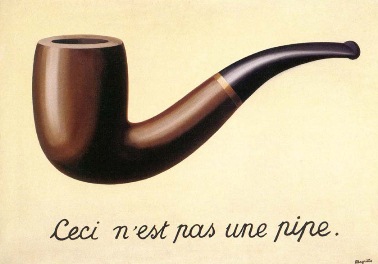There
is very little information about the items in your example. So the
brain seeks additional information through context.
Let
me illustrate. Take the question:
"How
important is tweadlfark?"
Your
first question is "wtf is tweadlfark?"
Your
second question is "how can I found out more so I can put
tweadlfark into context?"
Now
your brain has a clever mechanism that seeks out differences and
enhances them. That's because differences matter in nature. The
difference may be that there is only one fruit that is ripe or, more
importantly, one of those mushrooms is poisonous. So the ability to
see differences is an essential survival skill. So, surprise,
surprise, your brain emphasizes differences. This is what's happened
here.
In
the one on the left, the orange circle is smaller than the others so
its smallness is emphasised. On the right, it's the largest so it's
largeness is emphasized.
However,
I lied.
There
is an illusion here. It's the illusion that there is only one
"correct" answer as defined by the arbitrary idea that they
are the "same size" or, should I say, that "same size"
is the defining characteristic of this comparision and all other
considerations are null and void and should take no part in the
discussion.
The
logic is that because they're the same size, they are the same in
every other respect. When said like that, you can see how silly the
idea is.
Take
this picture:
Here,
the man is larger than the Eiffel Tower. So is that an illusion?
Well, it may be. That could be a model of the Eiffel Tower built to
fool us. But the con is all in the 2 dimensional distortion of
reality that is the photo.
It's
like asking why a 2 dimensional representation of a 3 dimensional
cube looks like this:
It
is the distrorted attempt to suggest 3 dimensions when you only have
2 to play with.
But
which one is right? They're all right in that that is how a cube can
look from a particular angle but they're all wrong if they claim that
that is the only way a cube can look from any direction or that one
direction is more important than another.
And
that is the illusion.
This
is a clear case of mistaking the map for the territory.
Let's
take a more famous example
The
words underneath say "This is not a pipe".
And
they're right, it's not a pipe. It's just blocks of various colours
on a screen. We resolve those colours into a definable shape and then
determine the 3 dimensional object that best "fits" that
shape and decide that it is a pipe and, in fact, is a a particular
pipe that is usually associated with Sherlock Holmes.
But,
of course, it's only a pipe if we recognise it as a pipe.
A
plumber would say, "That's not a pipe. This is a pipe"
And
they would be right
A
musician would say, "That's not a pipe. This is a pipe"
And
they would be right
I
see this kind of stunted thinking all of the time in lateral thinking
puzzles - which is ironic when you think about it.
Let's
take a classic example:
There
are three objects in the damp grass under the bright sunshine. What
are they?
The
usual answer is two pieces of coal and a carrot which were the eyes
and nose of a recently melted snowman as demonstrated by the damp
grass.
The
real answer is: they can be anything you can think of. For example,
they might be a rock, a goldfish and an overturned goldfish bowl
where the aforementioned rock hit the bowl spilling the contents
onto the now damp grass and leaving our poor goldfish to its fate
under the sunshone. Or it could be a gun and two gloves thrown out of
the window of a passing train after a murder wher the grass is damp
with morning due and has no immediate relevance to the identification
of the objects only the time they were placed. Or it could be an
alien and their robot which has recently parked their alien craft
(the third object) there for a picnic only to be disappointed because
the grass is wet from recent rainfall. The number of "correct"
answers is near infinite.
The
illusion is that when you limit the amount of usable information, you
also limit the number of "correct" answers to that
information when the reverse is actually the case. As, less
information is given, more has to be inferred to construct a sensible
scenario and in that inference, the number of options multiplies
exponentially.
The
illusion is that the assumptions we make are the only assumptions you
can make and all others are wrong.
In
case, you're wondering a tweadlfark is a type of tuning fork used to
find the note of the human aura so you can re-tune it to be in
harmony with the music of the spheres.






No comments:
Post a Comment